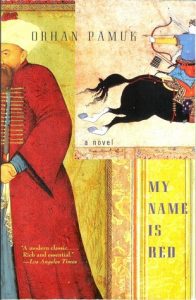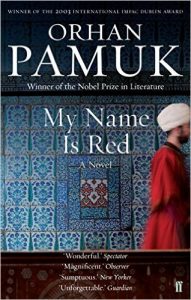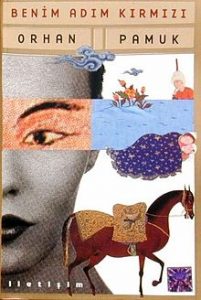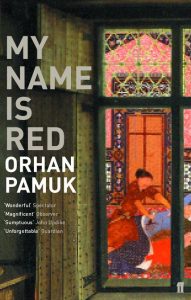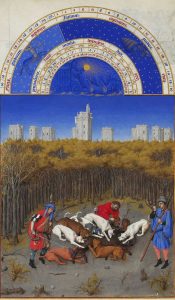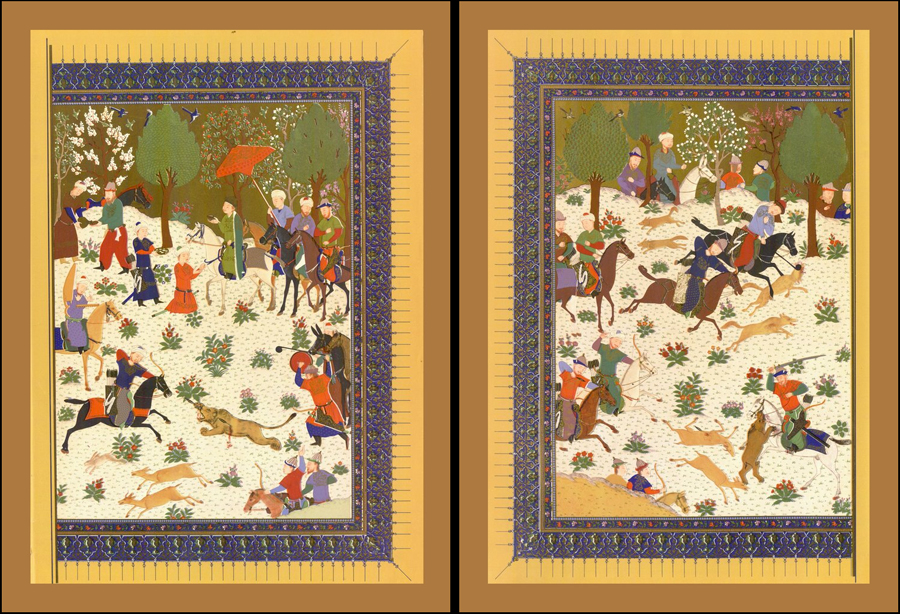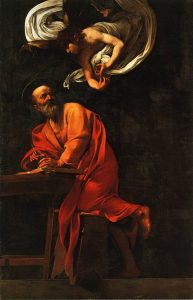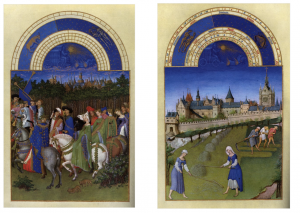In class we discussed how Orhan Pamuk emphasizes the importance of vision and seeing not only to experience illustration, but also to question the world around us. I though it would be interesting to incorporate what we’ve learned about paratext from previous classes into how one sees and reacts to the cover art of this literary work. Below are a few covers:
The first one is most similar to the one I own. My initial reaction was that this is an eastern novel, but other than that it was difficult for me to predict what the plot could be. Now I realize that this was intentional because it’s a mystery that leaves room for a lot of interpretation.
The second cover also informs me that the novel embodies something of eastern culture, but shows this with more religious undertones than the first one. I think by incorporating the intricate arabesque as a major focal point, connotations of religion, specifically Islam, naturally drift into the viewer’s head. Also, it seems as if this cover is more wordy than the other three, but I think that may be due to the structural arrangement. By centering the words, it is evident that western ways of composition have influenced eastern publications.
The third cover is similar to the first cover in that by only showing half of the woman’s face and providing a collage of various natural elements, the plot and its’ meaning remain enigmatic. In my opinion, out of the four covers shown, this one is the least westernized.
For the final cover, my initial reaction was that it combined modern and aged elements. The font and structure makes it seem like an advertisement I’d see today in the west, but the aged style and color of the image makes me believe the novel eastern. Again, the battle between eastern and western ideas.
I think all of these covers show the main theme of the book that deals with conflict between western and eastern illumination. What cover do you think is the best at representing the visual and textual messages of the novel? What were your initial reactions to viewing these covers?

